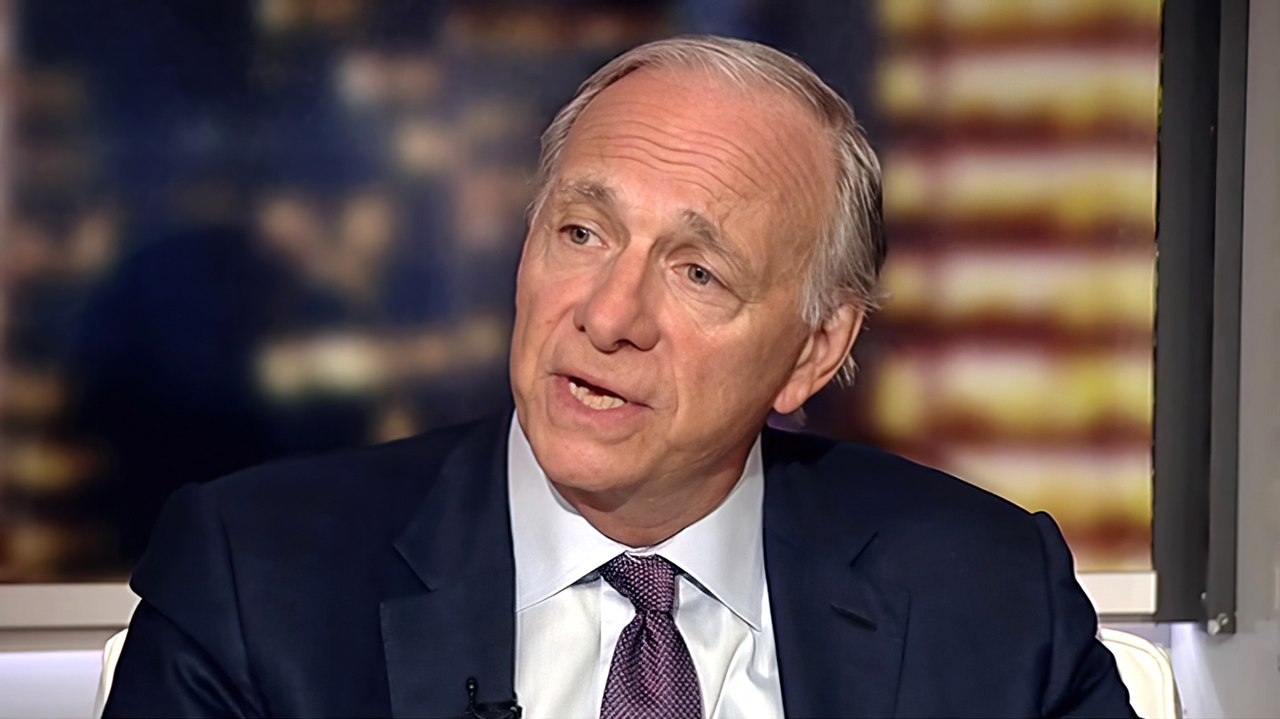Key Highlights
- Gold and Treasuries are both considered safe-haven assets, but they have their own pros and cons.
- Gold is often seen as a hedge against inflation, while Treasury bonds offer guaranteed returns.
- The price of gold can be volatile, while Treasury yields are more stable.
- Gold can provide a safe haven during times of economic uncertainty, Treasuries are backed by the U.S. government.
- Exchange-traded funds (ETFs) invest in gold and hold Treasuries can be a good option for investors.
- It’s important to consider factors like risk assessment, liquidity, and opportunity cost when comparing gold and Treasuries.
Introduction
When it comes to investing, there are a multitude of options available to individuals. One common dilemma is choosing between gold and Treasuries. Both of these assets are considered safe bets, but they have their own unique characteristics and advantages. In this blog, we will explore the basics of gold and Treasuries as investments, compare their historical performance, analyze how they react to economic fluctuations, and evaluate the advantages and drawbacks of investing in each.
Gold has long been hailed as a hedge against inflation and a store of value. It has a rich history and is often seen as a safe haven during times of economic uncertainty. On the other hand, Treasuries, specifically Treasury bonds, are backed by the U.S. government, making them a secure investment option. They also provide guaranteed returns and are considered a low-risk asset.
Understanding the differences between gold and Treasuries is crucial for investors who are looking to diversify their portfolios and protect their wealth. By examining their historical performance, the impact of economic fluctuations, and the advantages and drawbacks of each, investors can make informed decisions about which asset is the safer bet for their individual circumstances.
Understanding the Basics of Gold as an Investment
Before delving into the comparison between gold and Treasuries, it is important to understand the basics of gold as an investment. Gold is a precious metal that has been valued for centuries due to its rarity, beauty, and resistance to corrosion. It is traded in the global market and its price is influenced by various factors such as supply and demand dynamics, investor sentiment, and the strength of the dollar.
One of the key characteristics of gold is its status as a store of value. Throughout history, gold has maintained its purchasing power and has been used as a medium of exchange and a form of wealth preservation. Investors often turn to gold as a hedge against inflation and currency devaluation, as it has the potential to retain its value even in times of economic uncertainty. Physical gold, in the form of bars or coins, can be purchased and stored by individual investors, or they can invest in gold through exchange-traded funds (ETFs) or other financial instruments.
Historical Performance and Value Stability
When evaluating the performance of gold as an investment, it is important to consider its historical price movements and value stability. Over the years, the price of gold has shown both upward and downward trends, reflecting the dynamics of the global economy and investor sentiment. The performance of gold can be measured in terms of its price per ounce, which has experienced significant fluctuations.
While the price of gold can be volatile in the short term, it has demonstrated long-term value stability. Gold has consistently held its value over time, making it an attractive investment option for those seeking to preserve their wealth. Investors who have held gold for extended periods have often seen positive returns, especially during times of economic crisis or uncertainty.
How Gold Reacts to Economic Fluctuations
Gold is often considered a safe-haven asset that investors turn to during economic fluctuations and times of geopolitical risk. It has a negative correlation with other asset classes, meaning that its price tends to rise when other investments, such as stocks or currencies, are performing poorly.
During periods of economic uncertainty, gold can provide a sense of stability and act as a hedge against inflation and currency devaluation. It is seen as a tangible asset with intrinsic value, unlike paper currencies or financial instruments that can be affected by market fluctuations.
Investors who are looking to diversify their portfolios and protect their wealth often allocate a portion of their investments to gold. By adding gold to their portfolios, investors can potentially reduce the overall risk and increase the stability of their investment holdings.
Exploring Treasury Securities as an Investment Option
In addition to gold, Treasury securities, specifically Treasury bonds, are also considered a safe investment option. Treasury bonds are debt obligations issued by the U.S. government to finance its operations and pay for various expenditures. They are backed by the full faith and credit of the U.S. government, making them a low-risk investment.
The return on Treasury bonds is determined by the yield, which is influenced by various factors, including the interest rate set by the Federal Reserve, inflation expectations, and the overall demand for Treasuries in the market. Treasury yields are often used as a benchmark for other interest rates in the economy and are closely monitored by investors and policymakers.
Features of Treasury Bonds, Notes, and Bills
There are different types of Treasury securities, including Treasury bonds, Treasury notes, and Treasury bills, each with their own features and characteristics.
- Treasury bonds have a maturity period of more than 10 years and pay interest semiannually. They are considered long-term investments and are often used by investors who are looking for a steady stream of income over an extended period.
- Treasury notes have a maturity period of 2 to 10 years and also pay interest semiannually. They are considered medium-term investments and can provide a balance between income and liquidity.
- Treasury bills, also known as T-bills, have a maturity period of less than 1 year and are issued at a discount to their face value. They do not pay interest, but investors can profit from the difference between the purchase price and the face value.
Interest Rates and Their Impact on Treasuries
Interest rates play a crucial role in determining the value and performance of Treasury securities. The Federal Reserve sets the interest rate, known as the federal funds rate, which influences short-term interest rates in the economy. Changes in the federal funds rate can have a significant impact on Treasury yields and the overall performance of Treasuries.
When interest rates rise, the yield on Treasury securities also increases, as investors demand higher returns to compensate for the higher cost of borrowing. Conversely, when interest rates decline, the yield on Treasuries decreases, making them more attractive to investors seeking fixed income.
Changes in interest rates are closely monitored by investors and can affect the value of existing Treasury holdings. For example, if an investor holds a Treasury bond with a fixed interest rate and market interest rates rise, the value of the bond may decline because the fixed interest rate becomes less attractive compared to the higher prevailing rates.
Comparativ
e Analysis: Gold vs. Treasuries
Now that we have explored the basics of gold and Treasuries as investments, let’s compare the two asset classes based on various factors such as risk assessment, liquidity, and opportunity cost.
Risk assessment is an important consideration for investors. While gold is often seen as a safe-haven asset, its price can be volatile, and its performance is influenced by various factors such as supply and demand dynamics and investor sentiment. On the other hand, Treasuries, especially Treasury bonds, are backed by the U.S. government, making them a low-risk investment.
Liquidity refers to the ease with which an asset can be bought or sold without causing a significant change in its price. Gold, being a globally traded commodity, is highly liquid and can be easily bought or sold. Treasury securities, especially Treasury bills, also have high liquidity as they are actively traded in the financial markets.
Opportunity cost is another important consideration for investors. When choosing between gold and Treasuries, investors need to consider the potential returns they can earn from each asset class and the alternative investments they may have to forgo. For example, investing in gold may mean missing out on potential returns from other investments such as stocks or bonds.
Risk Assessment in Different Economic Conditions
The risk assessment of gold and Treasuries can vary depending on the economic conditions. During times of economic uncertainty or geopolitical instability, gold is often seen as a safe haven asset. Its price tends to rise as investors seek a store of value and a hedge against inflation and currency devaluation. Gold has historically shown a negative correlation with other asset classes such as stocks, meaning that its price tends to move in the opposite direction.
On the other hand, Treasuries, especially Treasury bonds, are considered low-risk investments due to the backing of the U.S. government. Their performance is influenced by factors such as interest rates and inflation. During periods of economic downturn, Treasury bonds may be seen as a safe bet, with their prices typically rising as investors seek less risky investments. However, Treasury bonds can also be affected by changes in interest rates, which can impact their value.
Liquidity and Accessibility for Investors
When comparing the liquidity and accessibility of gold and Treasuries, it is important to consider the nature of the asset classes and the availability of investment options for individual investors.
Gold, being a globally traded commodity, has high liquidity and can be easily bought or sold on the market. Investors can choose to invest in physical gold, such as bars or coins, or they can invest in gold through exchange-traded funds (ETFs) or other financial instruments. Gold is also actively traded on various exchanges around the world, providing investors with ample opportunities for buying and selling.
Treasuries, on the other hand, are issued by the U.S. government and are backed by the full faith and credit of the government. They are considered a low-risk asset class and are widely available to investors. Treasury securities are actively traded in the financial markets, and investors can easily buy or sell them through brokerage accounts or other investment platforms.
Advantages and Drawbacks of Investing in Gold
Investing in gold offers several advantages, but it also comes with its own set of drawbacks. One of the main advantages of investing in gold is its ability to act as a hedge against inflation. As the value of currencies decreases over time due to inflation, gold has the potential to retain its value and even increase in price. It is also seen as a safe haven asset during times of economic uncertainty.
However, gold can be volatile in the short term, and its price can experience significant fluctuations. This volatility can make it a risky investment for some investors. Additionally, investing in physical gold requires storage and security measures, which can add to the cost and logistical complexities of ownership.
Hedge Against Inflation
One of the main advantages of investing in gold is its ability to act as a hedge against inflation. As the value of currencies decreases over time due to inflation, the price of gold has historically increased. This is because gold is seen as a store of value and a tangible asset that retains its worth even when the value of paper currencies declines.
When inflation is high, the real interest rate, which is the nominal interest rate minus the rate of inflation, can be negative. In this scenario, holding gold can provide protection against the erosion of purchasing power caused by inflation. Investors often turn to gold as a way to preserve their wealth and maintain the value of their assets in times of rising prices.
Volatility and Uncertainty Factors
One of the drawbacks of investing in gold is its volatility and the uncertainty surrounding its price. Gold prices can be influenced by various factors such as global economic conditions, geopolitical tensions, and investor sentiment. This can lead to significant fluctuations in the price of gold, making it a potentially risky investment.
Investors who are looking for stable and predictable returns may find the volatility of gold unsettling. It is important to note that gold prices can be influenced by short-term market trends and speculation, which can lead to sharp price swings. If investors are not prepared for this volatility and do not have a long-term investment horizon, they may find it challenging to navigate the gold market and make informed investment decisions.
Advantages and Drawbacks of Investing in Treasuries
Investing in Treasuries, specifically Treasury bonds, offers several advantages, but it also comes with its own set of drawbacks. One of the main advantages of investing in Treasuries is the government backing. Treasury securities are considered low-risk investments as they are backed by the full faith and credit of the U.S. government.
However, one drawback of investing in Treasuries is the lower returns compared to other investment options. Treasury yields are often lower than the potential returns from riskier investments such as stocks or corporate bonds. Additionally, the performance of Treasuries can be influenced by changes in interest rates and monetary policy, which can impact their value.
Safety and Government Backing
One of the main advantages of investing in Treasuries is the safety and government backing they offer. Treasury securities are considered to be one of the safest investments available as they are backed by the full faith and credit of the U.S. government. This means that the government is obligated to repay the principal and interest on the securities.
The safety of Treasury bonds is a key factor that attracts investors, especially those seeking low-risk investments. The U.S. government has a long history of meeting its debt obligations, and Treasury securities are widely regarded as a reliable and secure investment option.
Lower Returns Compared to Other Investments
One of the drawbacks of investing in Treasuries is the lower returns compared to other investment options. Treasury yields are often lower than the potential returns from riskier investments such as stocks or corporate bonds.
The rate of return on Treasuries is influenced by various factors such as interest rates and inflation expectations. When interest rates are low, Treasury yields tend to be lower as well. This can result in lower income for investors who rely on the interest payments from Treasuries.
Investors who are seeking higher returns may need to consider other investment options that offer potentially higher rates of return. However, it is important to weigh the potential returns against the risks involved and the overall
investment objectives before making any investment decisions.
Conclusion
In conclusion, both gold and treasuries offer distinct advantages and drawbacks as investment options. Gold historically provides stability and acts as a hedge against inflation, while treasuries offer safety and government backing but with lower returns. Understanding the economic conditions and your investment goals is crucial in determining which option aligns best with your portfolio diversification strategy. Make informed decisions based on risk assessment and liquidity needs to optimize your investment approach. Consider consulting with a financial advisor for personalized guidance on incorporating gold and treasuries into your investment portfolio effectively.
Frequently Asked Questions
What Determines the Price Fluctuations of Gold?
The price fluctuations of gold are determined by various factors, including supply and demand dynamics, investor sentiment, mining production, and the strength of the dollar. Factors such as global economic conditions and geopolitical tensions can also impact the price of gold.
How Do Treasury Yields Affect the Overall Economy?
Treasury yields, especially long-term yields, are closely monitored by investors and policymakers as they can have a significant impact on the overall economy. Changes in Treasury yields, influenced by factors such as interest rates and inflation expectations, can affect borrowing costs, mortgage rates, and the investment climate.
Can Gold and Treasuries Be Part of a Diversified Portfolio?
Gold and Treasuries can be part of a diversified portfolio as they offer different risk and return characteristics. Including gold and Treasuries in a portfolio can help diversify risk, manage volatility, and balance the overall performance of the portfolio. The correlation coefficient between gold and Treasuries can provide insights into their potential diversification benefits.
What Are the Tax Implications for Gold and Treasury Investments?
The tax implications for gold and Treasury investments vary depending on factors such as the holding period, the type of investment, and the investor’s tax situation. Capital gains tax may apply to the sale of gold, while Treasury investments may be subject to different tax rules, including tax-exempt status for some securities. It is important to consult a tax professional or refer to IRS rules for specific tax guidance.









